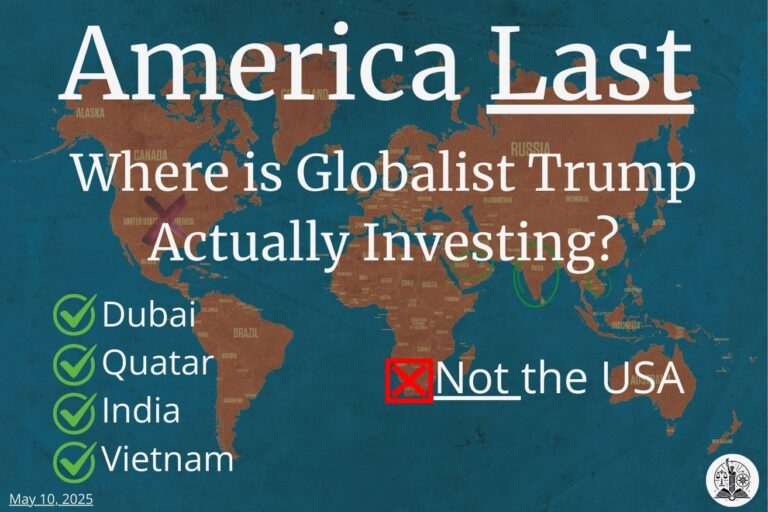The Biggest Expansion of Government Power in a Century
Note – this was initially a post on Facebook, copied and reformatted to this website.
– And It’s Coming from “Small Government Conservatives”
The Musk/Trump administration has launched a wave of executive orders, initiatives, and policy shifts, with the scale and rapid pace of these changes leaving policymakers, businesses, and even supporters struggling to keep up. One proposal, though, stands out for its sheer scope and potential impact: the creation of a U.S. Sovereign Wealth Fund (SWF). This isn’t just about one policy—it’s a profound shift in how the government interacts with the economy, fundamentally altering the Republican Party’s long-standing economic principles.
Unlike past shifts, such as the transition from Reaganomics to Trump’s economic nationalism, this move goes beyond regulatory changes or tariffs. It introduces a mechanism for direct government ownership and control over industries, something previously anathema to conservative economic philosophy.
What Is the U.S. Sovereign Wealth Fund?
Trump’s plan includes establishing an SWF to acquire and invest in critical industries like AI, energy, defense, and semiconductors. The fund would hold government stakes in strategic assets, reshaping private-sector competition.
The key funding sources? Tariffs and asset sales—bypassing congressional taxation and spending oversight. This isn’t just about TikTok—it’s a shift toward state-directed capitalism, where the government plays an active role in the economy, not just through regulation but through direct ownership and investment.
One of the first potential applications of this SWF is TikTok, but similar actions could extend to other industries deemed strategically important. Trump has suggested that this newly created fund could acquire a significant stake in the company, effectively nationalizing the platform under government control. While framed as a national security measure to counter China’s influence, the move raises a much bigger question: If the U.S. government starts owning and investing in businesses, where does that lead?
How Do Sovereign Wealth Funds Work?
A Sovereign Wealth Fund is a state-owned investment vehicle that manages national assets, often funded by natural resource revenues, trade surpluses, or government surpluses. Countries use SWFs to:
- Stabilize their economies
- Invest in long-term projects
- Exert geopolitical influence
Unlike traditional U.S. economic tools—monetary policy controlled by the Federal Reserve and fiscal policy directed by Congress—an SWF represents a third major lever of government economic influence, distinct in its ability to bypass constraints that typically limit government economic control.
- Monetary policy adjusts borrowing conditions.
- Fiscal policy depends on legislative approval.
- An SWF allows the government to amass wealth and directly shape industries, potentially without congressional oversight.
This would mark a significant shift in how the U.S. manages its economy, introducing a mechanism for direct state investment that could rival private capital.
How Other Countries Use Sovereign Wealth Funds
Countries with SWFs usually fall into two ideological categories:
- Independent Financial Stewardship – Neutral institutions focused on wealth preservation and social benefits (e.g., Norway’s Government Pension Fund Global).
- State-Controlled Economic Leverage – Investment tools used for national strategic goals and geopolitical influence (e.g., China’s China Investment Corporation, Russia’s National Wealth Fund).
Examples of SWFs Across Different Models:
- Norway – Rooted in social democracy, ensuring long-term financial stability for public welfare.
- China – Operates under state capitalism, using investments to support strategic national goals.
- Russia – Serves as an economic buffer against sanctions and a tool for state control over key industries.
- Saudi Arabia – Highly centralized and state-directed, focusing on economic diversification beyond oil.
- Singapore – Follows a state-led capitalist approach, backing high-tech and infrastructure investments.
The key question for the U.S. is whether a new SWF would follow the model of independent financial stewardship or become a centralized tool of executive power with political motivations.
The Biggest Expansion of Government Power Since 1913
The creation of the Federal Reserve in 1913 was the last time the U.S. centralized this much financial power. But the Fed functions as an independent institution, insulated from direct presidential control. A U.S. SWF, if housed within the executive branch, would mark the largest expansion of presidential authority in American history.
Unlike the Fed, which influences the economy through interest rate adjustments and monetary policy, an SWF would let the government directly invest in and control key industries.
- The Fed’s biggest risk: Inflation and recession mismanagement.
- A presidentially controlled SWF’s biggest risk: Political weaponization and economic manipulation.
A Trump-led SWF would be a powerful economic tool, reshaping industries, directing capital, and consolidating federal power over private enterprise—all without congressional approval.
Why This Contradicts Republican Free-Market Principles
For decades, the Republican Party has championed:
- Small government
- Free markets
- Minimal state intervention
Yet, a Trump-led SWF would be the largest government expansion of financial power in a century. Historically, Republican economic policy has focused on privatization, deregulation, and free-market competition. The idea that the government would actively invest in and control industries contradicts this philosophy.
- Reagan-era conservatism: Markets should determine winners and losers.
- Modern economic nationalism under Trump: Favors targeted government intervention in strategic sectors.
The shift is so dramatic that if a Democratic administration had proposed it, conservatives would likely label it socialism. Now, it’s being justified under the banner of economic nationalism.
A Shift Toward State-Directed Capitalism?
This isn’t just about TikTok—it’s a fundamental shift toward state-directed capitalism, a model historically seen in economies where governments exert direct control over key industries.
Countries like China and Russia have long used state-controlled investment as a mechanism for strategic economic influence, ensuring government priorities dictate market outcomes rather than competition.
If structured under the White House, a U.S. SWF would mark the largest expansion of executive power in modern history, giving unprecedented powers to the President.
This raises a fundamental question: Is the Republican Party now embracing government economic control?
Final Thoughts: A Permanent Shift Away from Free-Market Capitalism?
Democrats have sought to regulate the economy, often facing Republican pushback. But this move represents an entirely new and greater level of government intervention—one that surpasses anything previously proposed by either party.
Is this the beginning of a permanent shift away from free-market capitalism?
Sources Include
https://www.theguardian.com/us-news/2025/jan/29/donald-trump-executive-orders-signed-list
https://apnews.com/article/09c71f4a1e4084e3adf92546219ee4ab
https://www.ft.com/content/3e6e3bfd-9175-44a8-af41-bbf76b987f8d
https://www.investopedia.com/the-u-s-could-have-world-s-largest-weirdest-sovereign-wealth-fund-8786037
https://www.whitehouse.gov/fact-sheets/2025/02/fact-sheet-president-donald-j-trump-orders-plan-for-a-united-states-sovereign-wealth-fund
https://foreignpolicy.com/2025/02/06/trump-sovereign-wealth-fund-executive-order-explained
https://foreignpolicy.com/2023/04/03/us-right-economic-policy-gop-free-markets
https://www.whitehouse.gov/presidential-actions/2025/02/a-plan-for-establishing-a-united-states-sovereign-wealth-fund
https://www.americanbanker.com/news/questions-abound-for-trumps-sovereign-wealth-fund-plan
https://en.wikipedia.org/wiki/Sovereign_wealth_fund







